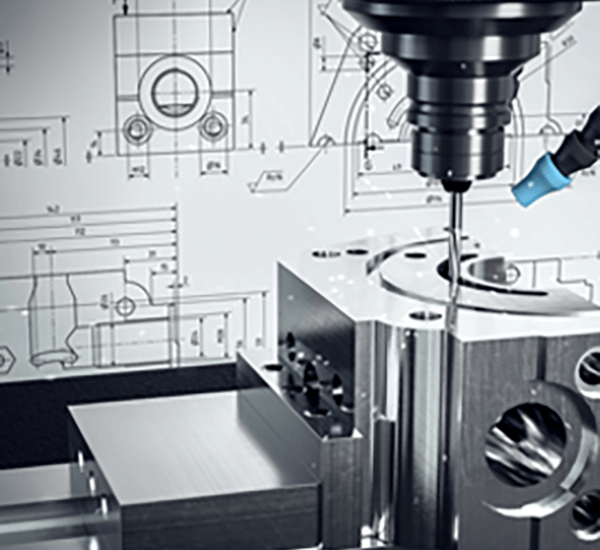
Securing exact surface quality on a machined component stands as fundamental.
- CAD annotations convey exact surface criteria for production
- Many specifications reference Ra, an average roughness metric, for surface measurement
- Understanding these callouts is fundamental for ensuring manufactured parts meet performance requirements
- Designated finish alters fluid film formation, friction levels, and durability outcomes
- Correctly reading the finish notation is necessary to attain the intended result
CNC Machining — Precision Engineering Explained

Robotic-assisted machining defines a modern manufacturing practice via numerical control software the system carves sophisticated geometries with precision.
- CNC systems permit manufacture of precise components from diverse substrates
- CNC adaptability suits industries including aerospace and automotive sectors
- CNC machining delivers exceptional repeatability ensuring identical parts across production runs
Across R&D to production scale-up CNC machining drives manufacturing evolution
CNC Spec Interpretation
Making sense of CNC specs can seem confusing on first pass
Even so practical familiarity and a systematic plan enable decoding machine specs
Start with locating core parameters: spindle rpm, feed, accuracy, work envelope, controller
Every listed attribute influences the equipment’s operational capacity.
To illustrate, faster spindle rotation fits soft materials and quicker feed improves production rates.
Knowing these correlations permits matching machine capabilities to your specs
Make sure to read supplier manuals attentively.
Provided manuals commonly contain clarifying information and define jargon
CNC Machinery: An Exhaustive Guide
G-code driven machining centers are computer-run systems for precise automated production of varied materials They interpret CNC code instructions to command cutting tools and motion.
- Several forms of CNC equipment are mills, lathes, routers, plasma cutters
- Machining methods apply across metals, plastics, wood, and composite substrates
- Likewise CNC solutions enable fast prototyping and small-lot production for enterprises and research labs
CNC Basics and Explanations
They illustrate synthesis of mechanical precision and computerized control logic Automated tools implement code to produce elementary parts and sophisticated assemblies Underlying principle converts virtual designs into actual manufactured items.
- Machine-controlled machining
- Digital-to-physical process
It follows systematic positional moves controlled by code Engineers contribute by setting machining variables, overseeing runs, and assuring product standards.
Why Surface Finish Matters in CNC Machining
Securing intended finish on parts is imperative It modifies operational efficiency and cosmetic finish The material, machining regimen, and subsequent finishing treatments contribute to surface quality.
High-quality surfaces strengthen durability while rough textures may reduce efficacy CNC systems provide diverse tooling and strategies to reach required finishes.
- Including selection of alternative tool profiles |cermet inserts|cutting velocit
 y selections to shape surface
y selections to shape surface - Secondary operations like sanding, grinding, or polishing boost finish
Understanding the relationship between machining parameters and surface finish is essential for achieving optimal results in CNC machining operations.
CNC Overview: From Use to Application
Precision production uses machine control software to shape parts from different material classes They adhere to programmed code to reproduce complex geometries with repeatable accuracy Familiarity with programming, tooling, and machine operation is key to process success
Sectors served include aerospace, automotive, manufacturing, medical, and electronics fields From intricate parts for aircraft engines to precision molds for plastic injection CNC machines have become indispensable tools for producing high-quality products with complex geometries
Specifying Surface Roughness for CNC Parts
Right specification of finish is necessary for CNC-produced parts It ensures that the final product meets the requirements for function and aesthetics Finish specifications are often expressed via the Ra roughness standard Shown in micrometers or inches, the measurement denotes typical roughness magnitude.
Balance smoothness needs with intended application when designating finish

Smooth textures are commonly specified for components demanding precise fits and tolerances
By contrast coarser finishes may be useful where additional grip or friction is desirable
Include unambiguous roughness values in drawings to specify finish demands Document the Ra value and enumerate any extra finishing or treatment instructions.
Bear in mind accurate finish callouts drive better manufacturing results
Kinds of CNC Machines and Their Strengths
Numerical control machining comprises numerous machine types engineered for diverse applications They work with CAD/CAM programs to command cutters and deliver accurate component fabrication.
- Boring and drilling equipment generate accurate holes and internal features
- Routers carve wood composite and plastics into detailed shapes and profiles
- Laser, waterjet, and plasma technologies suit intricate shapes and delicate workpieces
Choosing the right CNC depends on production goals material type and required accuracy Unique machine capabilities support varied industry needs such as automotive, aerospace, and medical.
Achieving Optimal Surface Finish with CNC Machining
Delivering optimal surface quality is necessary and CNC processes are well-suited to achieve it Through careful tuning of feeds speeds and tool profiles operators manage chip formation and surface generation Also advanced insert materials and suitable coolant practices support improved finishes Well-chosen cutting tactics plus careful setup empower manufacture of parts with exceptional surfaces.
Securing Surface Finish Through CNC Programming
Controlling finish within programming is key to obtaining target surface results The chosen machining parameters including feed rate spindle speed and cutting tool geometry exert a significant influence on the final surface texture Deliberate parameter selection and optimized lubrication enable near-flawless finishes.
- Furthermore regular tool maintenance and inspection are essential for ensuring a consistent and high-quality surface finish over time Moreover scheduled tool maintenance and inspection preserve surface performance In addition periodic tool servicing and checks secure consistent surface quality
- In pursuit of improved finish examine material properties, roughness goals and application
- CAM previews let programmers modify strategies to avoid finish defects
- Also ongoing tool care and inspection support sustained finish reliability
